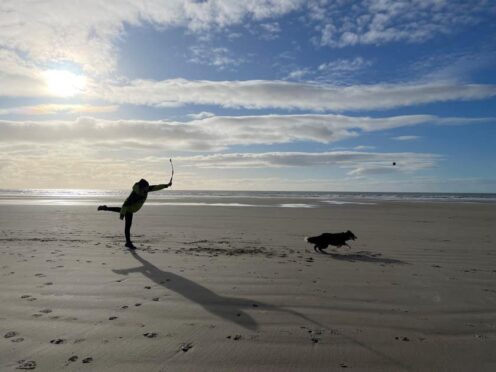
Spending quality time with dogs can reduce stress and anxiety, a small study has found.
Brain scans of healthy 30 adults showed that simply interacting with dogs – whether it is grooming, feeding or playing – generates electrical activity in the brain associated with relaxation, concentration, creativity, and attention.
Those taking part in the research “reported feeling significantly less fatigued, depressed, and stressed after all dog-related activities”, the scientists said.

The team said that although “fondness” for the animals may have played a role in generating these feelings, the findings add to evidence that canine therapy – often used in hospitals, schools and prisons – can help reduce anxiety and stress.
For the study, published in the journal Plos One, the researchers measured the brain activity of the 15 men and 15 women, aged 20 and above, using a device known as an electroencephalogram (EEG).
These people met, played with, fed, groomed, massaged, photographed, hugged, and walked with a friendly and well-trained four-year-old female poodle, with each activity lasting around three minutes.
The researchers said the EEG detected alpha brainwaves when the participants played with and walked the dog, “reflecting a state of relaxed wakefulness”.
Meanwhile, grooming or gently massaging the poodle saw an increase in beta brainwaves, which is associated with heightened concentration.
The authors wrote: “This study demonstrated that specific dog activities could activate stronger relaxation, emotional stability, attention, concentration, and creativity by facilitating increased brain activity.”
Commenting on the study, Dr Jacqueline Boyd, a senior lecturer in animal science at Nottingham Trent University, said the findings are “unlikely to be a surprise to canine caregivers”.
She said: “To have quantitative measurement of brain activity in people during direct interactions of different types with dogs, further adds to our understanding of the human-dog relationship.”
Dr Boyd added that recruitment of the study participants was biased towards those already happy to interact with the dog so “suggestions that all interactions with all dogs will benefit all people are to be viewed with caution”.
She said: “The novelty of involvement in a study with a friendly dog should also be highlighted as a potential limitation of the data.
“However, the reporting of measured physiological responses during canine interactions does suggest that there is some consistency in the biological basis of human-dog interactions that might be beneficial in therapeutic encounters.”

Enjoy the convenience of having The Sunday Post delivered as a digital ePaper straight to your smartphone, tablet or computer.
Subscribe for only £5.49 a month and enjoy all the benefits of the printed paper as a digital replica.
Subscribe